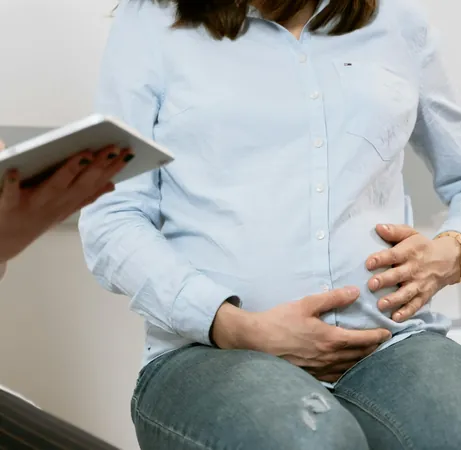
Pregnancy Risks with C3 Glomerulopathy: Unveiling the Hidden Dangers
2025-05-16
Author: Mei
Are Pregnancies During C3G Setup for Failure?
A groundbreaking study has shed light on the significant risks associated with pregnancies occurring during or after the diagnosis of C3 glomerulopathy (C3G). This condition, marked by inflammation in the kidneys, poses serious threats to both maternal and fetal health, including a higher likelihood of preeclampsia, premature birth, and deteriorating kidney function.
Data Reveals Alarming Statistics
According to a retrospective analysis from the University of Iowa, research highlights a staggering 59% of pregnancies resulting in severe complications for women diagnosed with C3G. While comprehensive data on the implications of C3G during pregnancy has been scant, this study fills an important void.
A Closer Look at the Study
Researchers examined cases from the C3G Natural History Study, focusing particularly on female patients over the age of 15. Out of 43 women with pregnancies, 32 provided enough detailed information to be included in the study. The results were eye-opening: 44% of the deliveries were premature, and a troubling 59% were associated with antepartum preeclampsia.
Risk Factors That Could Spell Trouble
Among the highlighted risk factors, preexisting hypertension and a low eGFR (estimated glomerular filtration rate) prior to pregnancy emerged as significant predictors of complications. Alarmingly, these factors are also tied to an increased risk of progressing to end-stage kidney disease (ESKD) later on.
Post-Pregnancy Kidney Function Deterioration
The study found concerning trends in kidney function following pregnancy. Post-pregnancy serum creatinine levels increased, and eGFR scores decreased, indicating that women with C3G are not just facing challenges during pregnancy, but also long-term health risks.
A Call for Enhanced Care
Researchers emphasized the necessity for multidisciplinary care that integrates obstetrics, nephrology, and pediatrics to navigate the complexities of pregnancy in women with C3G. With rising incidence and ever-increasing risks, tailored pre- and peri-pregnancy care could be vital in safeguarding both mothers and their infants.
Conclusion: The Hidden Reality of C3G and Pregnancy
These findings present a crucial maternal-risk profile for women considering pregnancy while living with C3G. As awareness grows, so too does the imperative for comprehensive support that can adapt to the unique challenges these women face.
 Brasil (PT)
Brasil (PT)
 Canada (EN)
Canada (EN)
 Chile (ES)
Chile (ES)
 Česko (CS)
Česko (CS)
 대한민국 (KO)
대한민국 (KO)
 España (ES)
España (ES)
 France (FR)
France (FR)
 Hong Kong (EN)
Hong Kong (EN)
 Italia (IT)
Italia (IT)
 日本 (JA)
日本 (JA)
 Magyarország (HU)
Magyarország (HU)
 Norge (NO)
Norge (NO)
 Polska (PL)
Polska (PL)
 Schweiz (DE)
Schweiz (DE)
 Singapore (EN)
Singapore (EN)
 Sverige (SV)
Sverige (SV)
 Suomi (FI)
Suomi (FI)
 Türkiye (TR)
Türkiye (TR)
 الإمارات العربية المتحدة (AR)
الإمارات العربية المتحدة (AR)